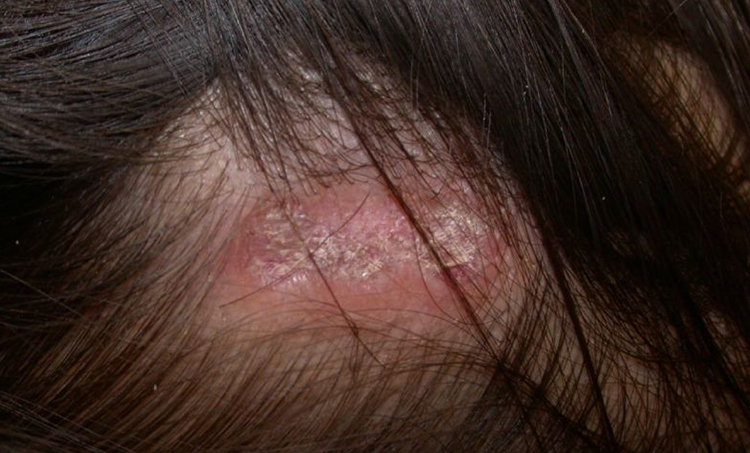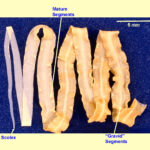What is Discoid Lupus Erythematosus?
Discoid Lupus Erythematosus (DLE) is a chronic autoimmune disorder primarily affecting the skin. It is a subtype of cutaneous lupus erythematosus and is characterized by red, inflamed, and scaly lesions that can lead to permanent scarring. While DLE mainly affects the skin, in some cases, it can develop into systemic lupus erythematosus (SLE), a more severe autoimmune condition that impacts multiple organs.

Causes and Risk Factors
DLE is an autoimmune disorder, meaning the body’s immune system mistakenly attacks healthy skin cells. The exact cause is unknown, but several factors may contribute:
- Genetics: Family history of lupus or other autoimmune diseases increases susceptibility.
- Ultraviolet (UV) Light Exposure: Sunlight and artificial UV sources can trigger flare-ups.
- Hormonal Influence: More common in women, suggesting a hormonal connection.
- Environmental Triggers: Smoking, infections, and certain medications may exacerbate symptoms.
- Immune System Dysfunction: Abnormal immune responses contribute to inflammation and tissue damage.
Symptoms of Discoid Lupus Erythematosus
DLE predominantly affects sun-exposed areas such as the face, ears, scalp, and neck. The main symptoms include:
- Red, Scaly Lesions: These plaques can become thickened, scarring, and hyperpigmented.
- Skin Discoloration: Darkening (hyperpigmentation) or lightening (hypopigmentation) of affected areas.
- Scarring and Hair Loss: If the scalp is involved, permanent hair loss may occur.
- Itching and Pain: Lesions may be tender, painful, or itchy.
- Photosensitivity: Worsening of symptoms after UV exposure.
- Mucosal Involvement: In some cases, DLE can affect the lips and inside the mouth, causing painful sores.
Diagnosis of DLE
A dermatologist typically diagnoses DLE through:
- Clinical Examination: Assessing skin lesions and medical history.
- Skin Biopsy: A small skin sample is examined under a microscope to confirm lupus-related changes.
- Blood Tests: Autoimmune markers, such as antinuclear antibodies (ANA), may be tested to rule out systemic lupus.
- Dermoscopy: A non-invasive technique to analyze skin features.
- Phototesting: Determines sensitivity to UV light.
Treatment and Management
Although there is no cure for DLE, treatments aim to reduce symptoms, prevent flare-ups, and minimize scarring.
1. Sun Protection
Since UV light is a major trigger, strict sun protection is crucial:
- Daily use of broad-spectrum sunscreen (SPF 50+)
- Wearing protective clothing and hats
- Avoiding direct sunlight, especially during peak hours
2. Topical Medications
- Corticosteroids: Reduce inflammation and redness.
- Calcineurin Inhibitors (Tacrolimus, Pimecrolimus): An alternative for sensitive areas like the face.
- Retinoids: Help with skin regeneration and minimizing scarring.
3. Systemic Treatments
For severe or widespread DLE, systemic medications may be required:
- Antimalarial Drugs (Hydroxychloroquine, Chloroquine): First-line treatment for controlling inflammation.
- Immunosuppressants (Methotrexate, Azathioprine, Mycophenolate Mofetil): Used in cases resistant to standard therapy.
- Corticosteroids (Oral or Intralesional): For acute flares, but long-term use should be limited due to side effects.
4. Lifestyle Modifications
- Quit Smoking: Smoking worsens symptoms and reduces treatment effectiveness.
- Healthy Diet: Anti-inflammatory foods, rich in omega-3 fatty acids, may help.
- Stress Management: Reducing stress through mindfulness, yoga, or therapy can prevent flares.
Complications of DLE
If left untreated, DLE can lead to:
- Permanent scarring and disfigurement
- Squamous cell carcinoma (a type of skin cancer)
- Psychological distress due to visible skin changes
- Progression to systemic lupus erythematosus (SLE) in some cases
Prognosis and Long-Term Outlook
With early diagnosis and effective treatment, most individuals with DLE can manage their symptoms successfully. However, lifelong sun protection and adherence to prescribed treatments are essential to prevent complications.

